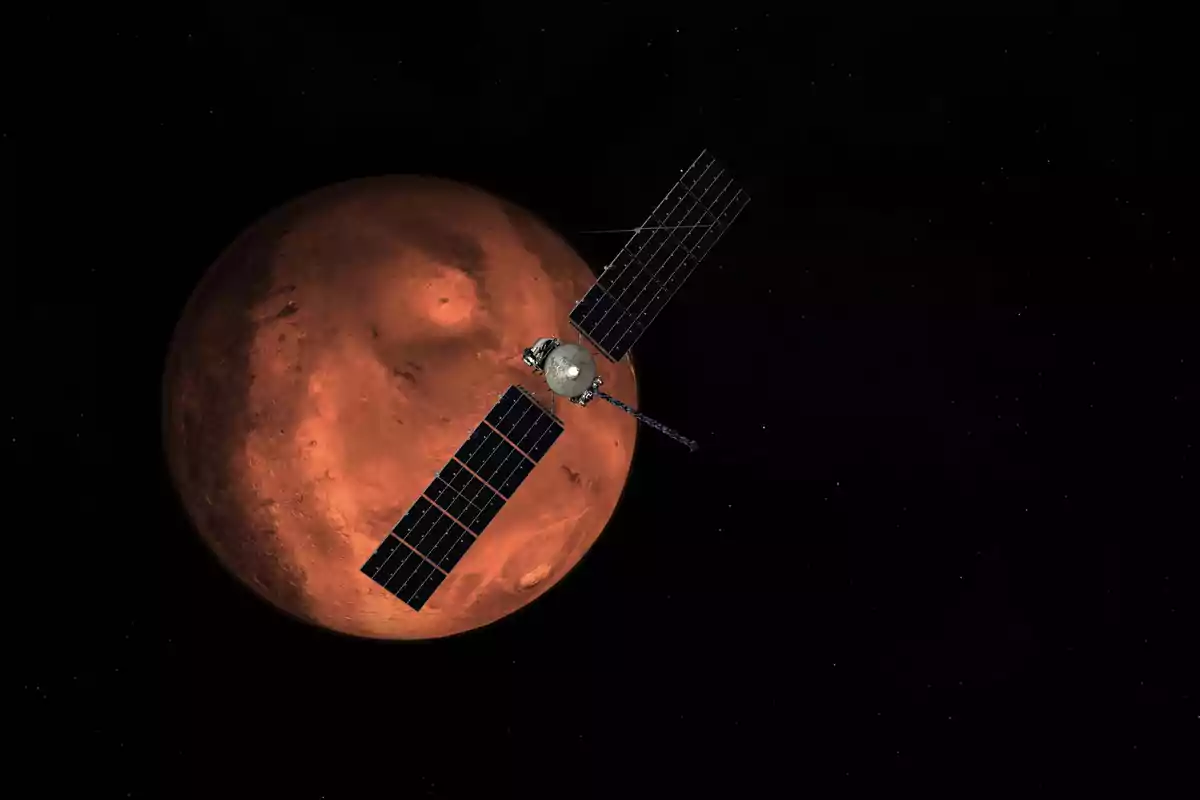Recently, a major discovery about Mars's internal structure has caused great excitement in the scientific community. NASA has revealed new data that radically change what was previously thought about the interior of the Red Planet. This finding promises to open new avenues of research into Martian evolution.
For years, the scientific community has debated the true composition of Mars's core. However, this new research has provided evidence that not only rekindles that debate, but could also rewrite part of the planet's geological history. The discovery has been described as one of the most significant advances since the arrival of space missions to Mars.

The hidden interior of Mars: this is how scientists discovered its solid core and what it means for science
Specifically, the study has confirmed for the first time the existence of a solid inner core in Mars. The research has been published by Nature and is based on seismic data obtained by NASA's InSight mission, which operated on the planet between 2018 and 2022. According to the findings, the solid core has an estimated diameter of approximately 746 mi. (1,200 km).
This inner core was likely detected through the analysis of 23 Marsquakes recorded by the InSight probe. Scientists analyzed how certain seismic waves, known as PKKP and PKiKP, behaved as they traveled through the planet or reflected within it. The behavior of these waves has been the key that has allowed them to deduce the existence of a solid structure at the center of Mars.
The size of this solid core, according to current models, ranges around a radius of 373 mi. (600 km). This measurement places Mars as a planet with an internal structure more similar to Earth's than previously believed. In fact, Mars is now considered to be composed of a crust, a mantle, a liquid core, and, at its center, a solid core.
Experts analyze the implications of NASA's recent discovery on the Red Planet
This discovery also has important implications for understanding the planet's thermal evolution. The presence of a crystallized core suggests that Mars may have begun an internal cooling process much earlier than previously thought. This cooling may have been key in the disappearance of its protective magnetic field.
In fact, it is known that Mars had a magnetic field more than 4 billion years ago, but it disappeared over time. The new hypothesis suggests that, although there is crystallization in the core, the process is too slow to regenerate a global magnetic field. This would explain why Mars is now a planet without magnetic protection.

Some experts keep a certain skepticism, although they acknowledge the strength of the data. Simon Stähler, a member of the InSight team, has estimated that there is a 30% probability that the solid core actually exists. Meanwhile, other scientists, such as Antonio Molina from the Center for Astrobiology in Madrid, believe that the finding shows that Mars may be more internally active than previously assumed.
New evidence on Mars's internal structure that sheds light on its evolution and potential habitability
In addition, it has been observed that the inner core is enriched in oxygen, which is also found in the outer core along with other elements such as sulfur, carbon, and hydrogen. This chemical differentiation suggests a complex crystallization process, which would be separating the lighter elements from the liquid core toward the exterior.
This NASA discovery not only reinforces the importance of interplanetary robotic missions, but also offers valuable clues about the evolution of rocky planets. Understanding Mars's core helps scientists understand how the planet has changed over billions of years. Perhaps, it also brings us a little closer to knowing whether Mars was ever a habitable place.

